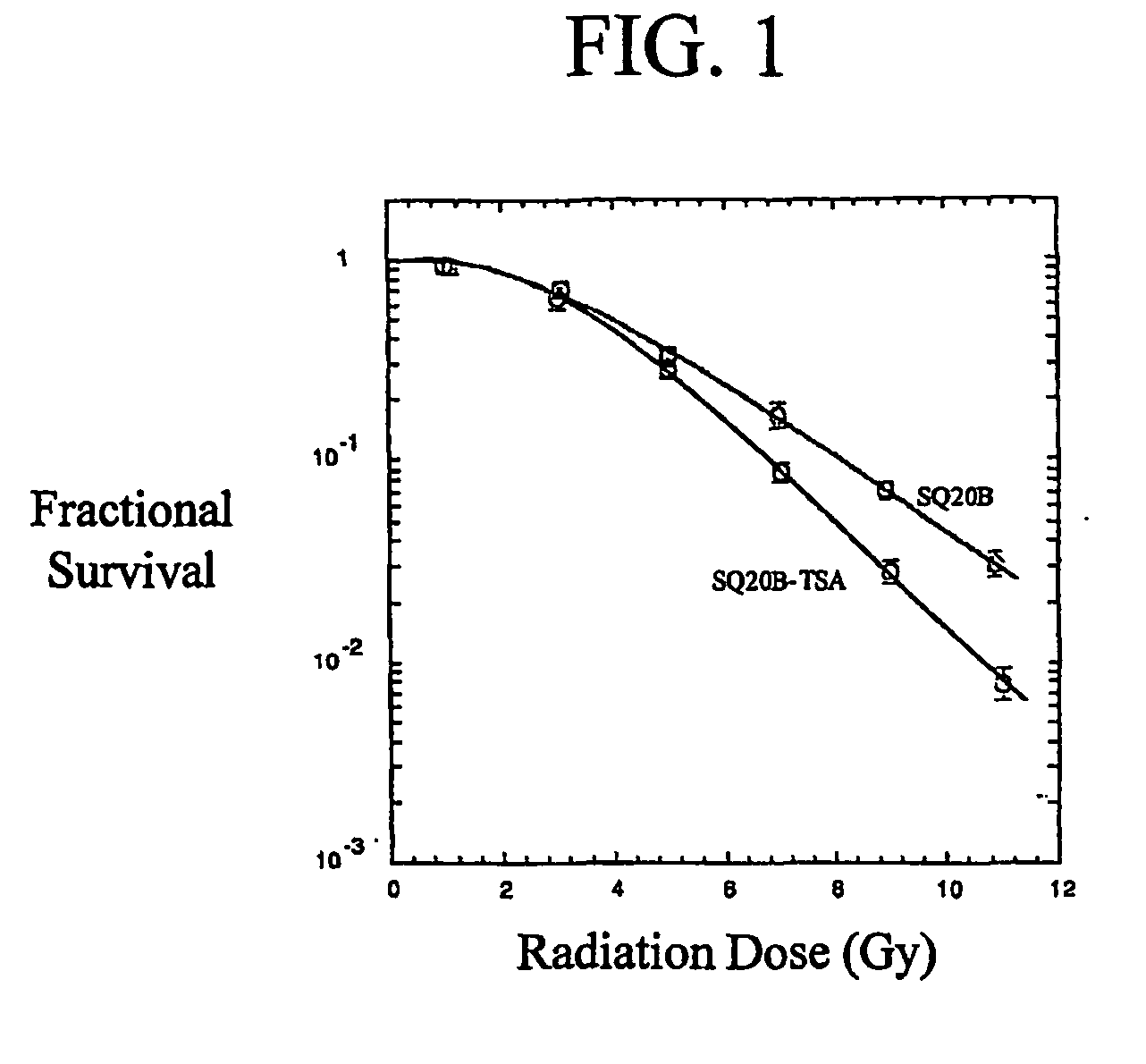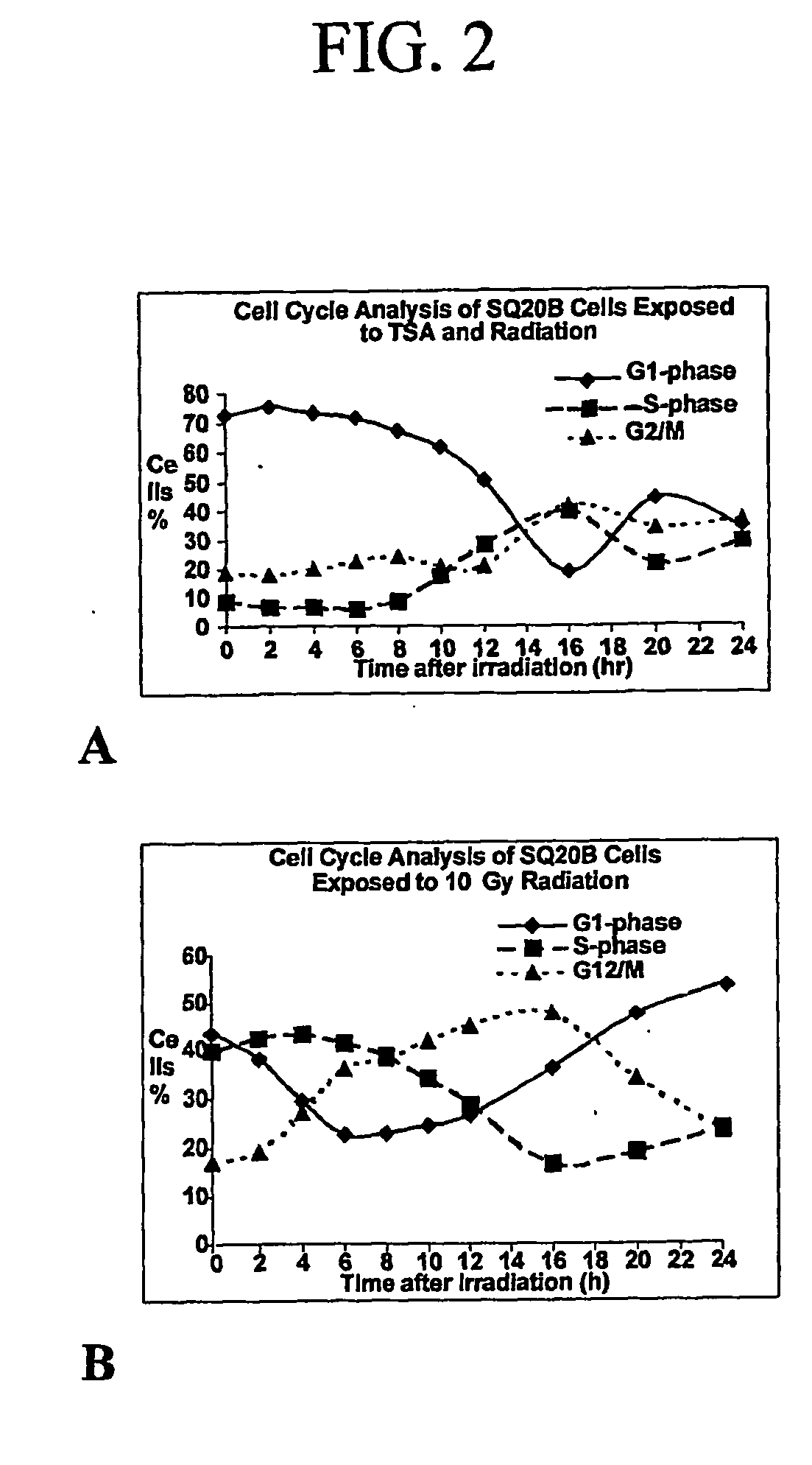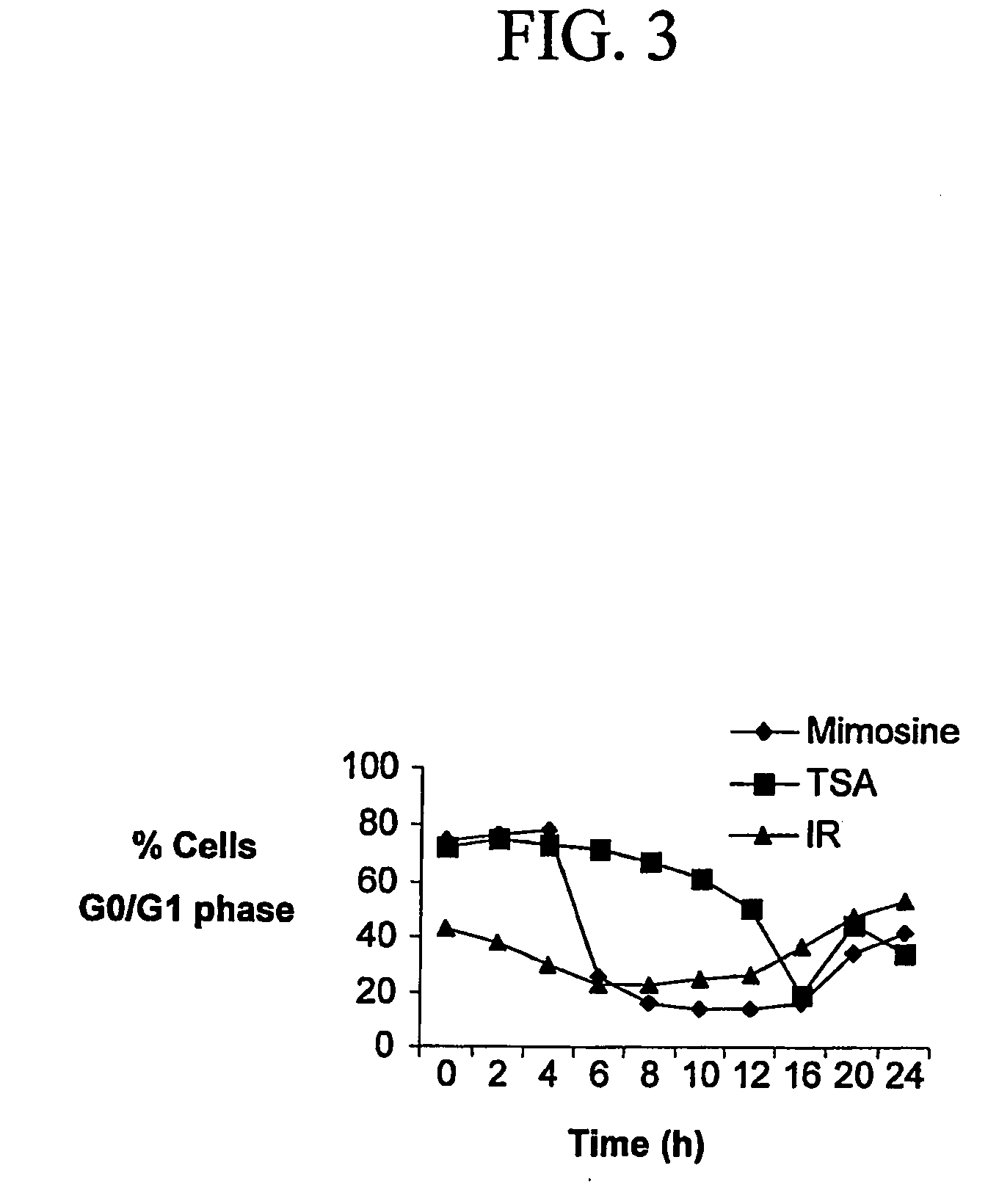Methods for the use of inhibitors of histone deacetylase as synergistic agents in cancer therapy
a technology of histone deacetylase and inhibitors, which is applied in the direction of drug compositions, peptide/protein ingredients, therapy, etc., can solve the problems of more damage to the cells they hit, inability for these cells to continue to grow, etc., and achieve the effect of enhancing primary radiation or chemotherapy treatment and avoiding systemic toxicity to the hos
- Summary
- Abstract
- Description
- Claims
- Application Information
AI Technical Summary
Benefits of technology
Problems solved by technology
Method used
Image
Examples
examples
[0053] The efficacy of any particular embodiment of the method of treatment can be assessed in a murine model of tumor growth and treatment.
[0054] Measurement of pharmacokinetics and toxicity of drugs. To evaluate in vivo introduction of HDAC chemical inhibitors, test drugs are injected intravenously, for example, via the tail vein into tumor bearing Balb / c nu / nu mice. Control mice are injected with normal saline. Blood is collected in heparinized tables at about 5 min, about 15 min, about 30 min, about 1 h, about 2 h, about 4 h, about 8 h, about 24 h and about 48 h after drug administration. Five mice are tested per time point. Mice are then euthanized and liver, spleen, kidney, lung, heart and tumor tissue are rapidly excised, rinsed in ice-cold normal saline and snap frozen on dry-ice. Blood samples are centrifuged at about 3000 rpm for about 10 min at about 40° C. to separate the plasma. The plasma and tissue samples are stored at about −800° C. for further analysis.
[0055] 1) ...
PUM
| Property | Measurement | Unit |
|---|---|---|
| Fraction | aaaaa | aaaaa |
| Time | aaaaa | aaaaa |
| Time | aaaaa | aaaaa |
Abstract
Description
Claims
Application Information
 Login to View More
Login to View More - R&D
- Intellectual Property
- Life Sciences
- Materials
- Tech Scout
- Unparalleled Data Quality
- Higher Quality Content
- 60% Fewer Hallucinations
Browse by: Latest US Patents, China's latest patents, Technical Efficacy Thesaurus, Application Domain, Technology Topic, Popular Technical Reports.
© 2025 PatSnap. All rights reserved.Legal|Privacy policy|Modern Slavery Act Transparency Statement|Sitemap|About US| Contact US: help@patsnap.com



